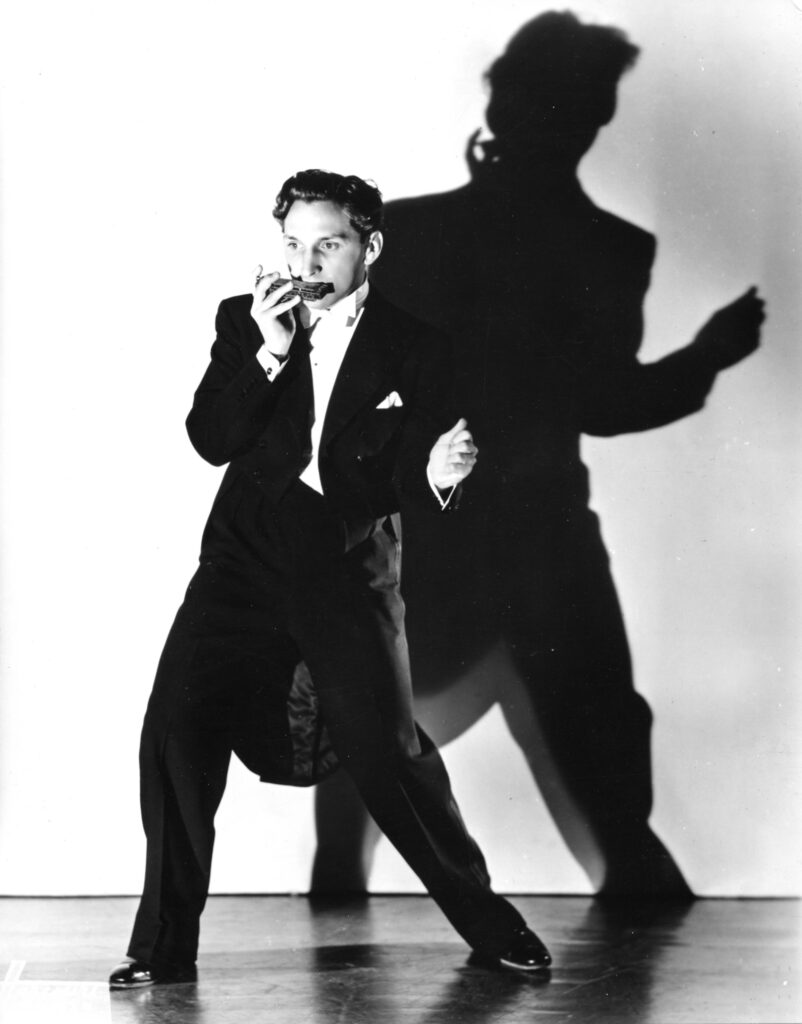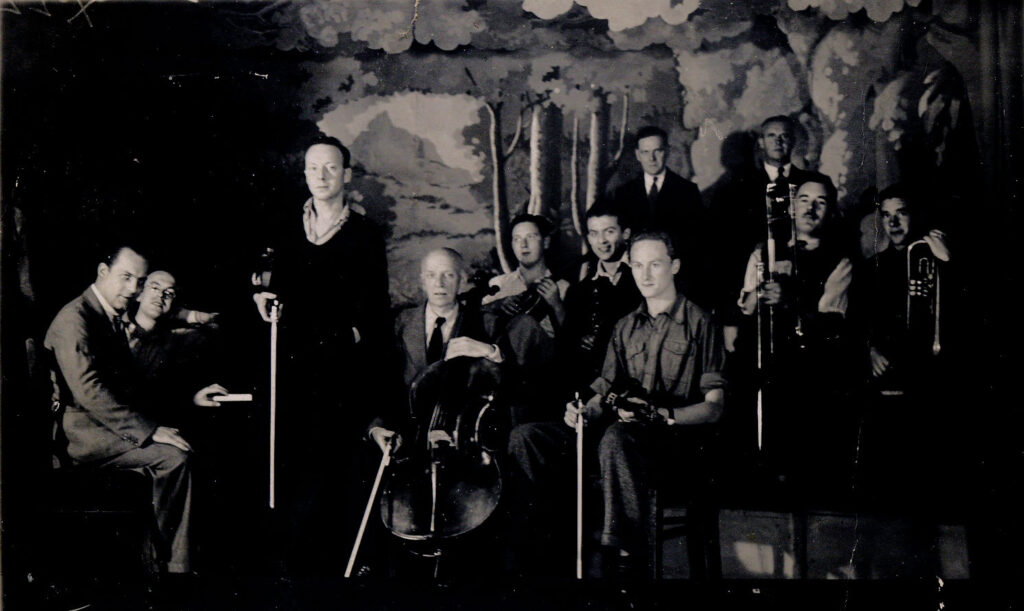HarmonicaUK started life as a Hohner marketing activity in 1935 and remained so until it was handed over to the members in 1981. It was first called the Hohner Song Band League, then the National Harmonica League and finally HarmonicaUK.
We left 1939 with a young pair of chromatic harmonica players, Ronald Chesney and Tommy Reilly, just starting their careers and Larry Adler enjoying world wide fame as a World War was breaking out.
The Hohner Song Band League stopped officially at the start of the Second World War and did not really get going again as a club until 1951. Despite this, these years turned out to be an important time for the harmonica.
The social changes brought about by the mixing of service men and women from all sections of society and all over the country and in foreign places led to a need for entertainment, and portable instruments like the harmonica were in great demand. Ronald Chesney led a campaign to collect harmonicas to send to the soldiers.
After the war things came together for the harmonica. This is illustrated in the programme notes for a concert of classical music performed by Ronald Chesney in the prestigious Royal Albert Hall in 1947, just after the end of WW2. It was the first solo concert held there by any harmonica player.

Ronald Chesney’s Programme Notes from the Royal Albert Hall
“Finding that his musical ability did not advance beyond the “party-piece” stage, Ronald Chesney’s lessons on the piano terminated at the age of twelve. Freed from the grind of five-finger exercises his natural love of music came to the surface, however, and nine years ago, at the age of seventeen, his studies were resumed. Discovering by chance the possibilities of the mouth-organ, he chose this surprising instrument for serious study and within two years had made his broadcasting debut with instantaneous success.
After appearances in many of the B.B.C.’s major programmes, his own feature, “Teaching the Allied Forces how to play the Harmonica,” commenced and brought him a fan mail running into many thousands of letters. Averaging nearly a hundred a day, Chesney took pride that the majority of these letters came from servicemen, stationed in all parts of the world – from the desert and from the lonely arctic circle, where the pocket- sized mouth organ was a substitute for full-sized symphony orchestra or swing band, depending on the musical tastes of the player’s comrades. To these men his programmes of instruction and music were a link with home.
His virtuosity on such a small instrument attracted the attention of concert impresario Harold Fielding, who has during recent years presented him in concerts throughout Great Britain, including a musical festival at Sadler’s Wells. Still a bachelor at twenty six and a young man of simple tastes, Ronald Chesney spends most of his time in a workshop at home, improving the mechanical aspect of the harmonica to keep pace with his musical progress. He believes the instrument capable of great improvement and considers he has only just begun to discover its vast musical possibilities.”
The harmonica was being taken seriously at last!
The chromatic harmonica moves into the spotlight
Larry Adler had been playing in America entertaining US troops at home and then in Europe.
Ronald and Larry both went to the Hohner factory in Trossingen as soon as the war ended to get more instruments.
Lots of things were on the move.
Ronald Chesney was touring the country with top musical artists, and Larry Adler was performing in the USA and around the world. He did his own concert at the Royal Albert Hall just after Ronald Chesney.

Tommy Reilly had been interned in a prisoner of war camp at the start of the war, when he was studying violin in Germany.
He spent time developing his technique on the chromatic harmonica. He returned when the war was over and started playing harmonica in Music Hall and on the BBC.
Tommy Reilly had been interned in a prisoner of war camp at the start of the war, when he was studying violin in Germany. He spent time developing his technique on the chromatic harmonica. He returned when the war was over and started playing harmonica in Music Hall and on the BBC.
Max Geldray had escaped to the UK from Holland at the start of the war and joined the Dutch Brigade of the British Army. He began playing in London jazz clubs in his spare time and even played in a concert for the Queen at Windsor in 1942. After the war he continued to find some work in clubs but his big break was just round the corner.
After the war Morton Fraser advertised for harmonica players and started the Morton Fraser Harmonica Gang with demobbed soldiers.
Eric York, Jimmy Prescott and Henry Leslie (aka Cedric/Les Henry) got together after leaving the Army and formed the Monarchs (later The Three Monarchs), initially as a straight act. The comedy came later.
Larry Adler blacklisted in the USA
The clouds were gathering for Larry Adler. He was blacklisted by the US House Un-American Activities Committee (HUAC) in 1947 along with many others in show business. This prevented him from working in America, which led to him moving with his family to live in the UK where he was much more appreciated.
The Golden Age of the Harmonica was about to start…
Back to History of HarmonicaUK home index page.
Forward to The History of HarmonicaUK – Part 3